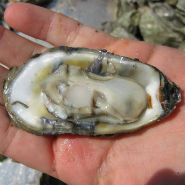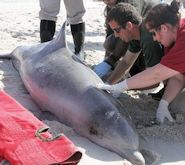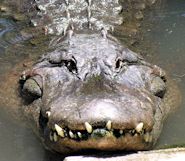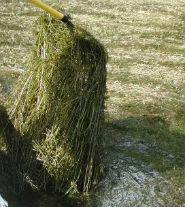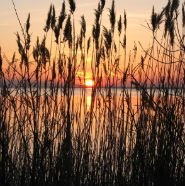Soon the monarch butterflies will begin their fall migration along Eastern North Carolina. However, some experts say this keystone species is in serious trouble.
Science
Study Finds Heavy Metals in Oysters
In the second of two parts, we detail the levels of heavy metals a recent study found in oysters in Brunswick and New Hanover counties.
What’s in Those Oysters You’re Eating?
A recent study takes a closer look at what’s accumulating in the oysters of Brunswick and New Hanover counties. In the first of two parts, we detail the research of a contaminant banned in Europe but commonly used here.
Is a Brown Tide Rising in N.C. Waters?
Brown algae has fouled coastal waters from New York to Texas, killing shellfish and suffocating grass beds. So far North Carolina has been spared. Have we just been lucky or is it merely a matter of time?
Casting New Light on Ocean Acidity
That’s a pteropod. No bigger than a pea, it’s very sensitive to acidity levels in seawater. New research conducted at the Duke Marine Lab suggests that these sea butterflies and other marine animals could be in for a tough future.
UNCW Lab at Center of Dolphin Deaths
Dolphins that die along the southern N.C. coast often end up at the University of North Carolina-Wilmington, where scientists have played a major role in investigating the recent viral epidemic that has killed thousands of dolphins.
‘A Terrible Milestone’
They are washing up on beaches and in estuaries, both the dead and the dying. More than 1,000 bottlenose dolphin have died along the East Coast since July. “It’s a terrible milestone,” says a scientist who has examined many of them.
The Flight of the Oystercatcher
Little backpack transmitters attached to six American oystercatchers are helping N.C. scientists understand the plight of a troubled species.
How Many Alligators in N.C?
To try and answer that question, Lindsey Garner, a graduate student at N.C. State University, is conducting the first alligator census in the state in 30 years.
Sea Turtles and Technology
There may come a day when new technology will help predict the beginning of life for one of nature’s oldest species.
The Fiery Origins of Carolina Bays
The state’s coastal plain is dotted with mysterious depressions that were long thought to be created by meteor strikes. New research suggests much more earthly origins.
Tracking Giants of the Cape Fear
State researchers catch and tag Atlantic sturgeon that prowl the Cape Fear River. The tags allow researchers to follow the movements of the endangered fish. Keeping track of them will help protect these ancient giants.
Why Should We Care About Rising CO2?
Not since camels roamed the Arctic Circle during the Pliocene Epoch three million years ago have carbon dioxide levels in the upper atmosphere been as high as they are today. In this first of a two-part series, we explore what it might mean.
Looking for Answers to Help Terrapins
Diamondback terrapins were once abundant in our coast’s marshes, creeks and sounds. Their population has declined, and researchers at the University of North Carolina-Wilmington hope to find some answers.
Hydrilla: ‘The Kudzu of the Water’
A little plant from Korea showed up in lakes around Raleigh 30 years ago. It now plagues the Roanoke, Chowan and Pasquotank rivers and has been spotted in Albemarle Sound. Biologists fear that pristine Lake Mattamuskeet and Lake Phelps could be next.
The Invasion of the Reed Plant
A native plant that was once part of healthy coastal wetlands is being pushed aside by a foreign cousin that is invading our marshes, creating a barren ecosystem in its wake.



